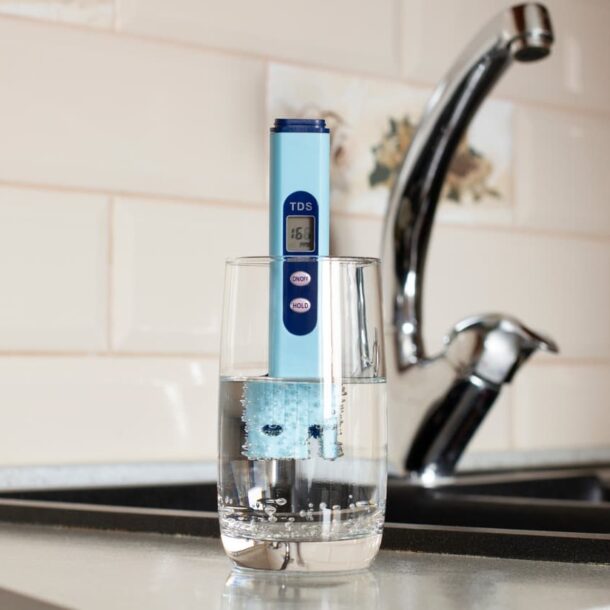
Subclinical Hypothyroidism: Unseen Challenge In Thyroid Health- HealthifyMe
Thyroxine (T4) and triiodothyronine (T3) are the main thyroid gland hormones. These thyroid hormones regulate metabolism, growth, and various bodily functions. Thyroid-stimulating hormone (TSH) from the anterior pituitary gland works with T4 to maintain feedback mechanisms and homeostasis. TSH also signals the thyroid to produce thyroid hormones. If blood levels of thyroid hormones are low, the pituitary gland increases TSH production to stimulate the thyroid. However, when TSH levels are high, but thyroid hormone levels are normal, it leads to subclinical hypothyroidism.
About 8% of women and 3% of men have subclinical hypothyroidism, which is more common than overt hypothyroidism.
What is Subclinical Hypothyroidism?
Subclinical hypothyroidism occurs when TSH (thyroid-stimulating hormone) levels are high, but thyroxine (T4) and triiodothyronine (T3) levels are normal. It is also known as mild or borderline hypothyroidism. In some cases of subclinical hypothyroidism, patients may test positive for antithyroid antibodies. These antibodies are an indicator of Hashimoto’s thyroiditis, a condition that causes a gradual decline in thyroid gland function.
Between 8 to 10% of people have subclinical hypothyroidism, which can develop into full hypothyroidism. A study found that within six years of diagnosis, about 26.8% of those with subclinical hypothyroidism progressed to full hypothyroidism.
Summary
Subclinical hypothyroidism, marked by high TSH but normal T4 and T3 levels, is a type of mild or borderline hypothyroidism. Some cases show positive antithyroid antibodies, indicating Hashimoto’s thyroiditis, which may worsen thyroid function. It affects 8 to 10% of people, with about 26.8% progressing to full hypothyroidism in six years.
Symptoms of Subclinical Hypothyroidism
Patients with subclinical hypothyroidism often don’t show symptoms, especially when TSH levels are only slightly high. Some may experience vague symptoms that could also be caused by other conditions.
The following symptoms may develop slowly over time. These symptoms are nonspecific, meaning they can occur in people with normal thyroid function and may not necessarily be a result of subclinical hypothyroidism.
- Thinning hair or coarse hair
- Having heavy or irregular periods
- Feeling depressed or easily irritated
- High cholesterol
- Swelling in the neck
- Feeling cold all the time
- Constipation and gaining weight
- Hoarseness
- Hearing loss
- Feeling tired all the time
- Being extra sensitive to cold
- Headaches or trouble concentrating
- Muscle pains or weakness
Summary
Patients with subclinical hypothyroidism often don’t show symptoms, especially when TSH levels are only slightly high. Some may have vague symptoms that could be caused by other conditions. Over time, symptoms like depression, fatigue, high cholesterol, neck swelling, coarse hair, cold intolerance, constipation, weight gain, sensitivity to cold, headaches, thinning hair, irregular periods, and mood changes may develop slowly.
Causes of Subclinical Hypothyroidism
Hashimoto’s thyroiditis is when the body’s immune system attacks the thyroid, damaging its cells. It’s the leading cause of subclinical hypothyroidism, making up 60–80% of cases. Other risk factors and causes are:
Gender
Women are more prone to develop subclinical hypothyroidism than men. The reasons remain unclear, but it can be due to the female hormone oestrogen.
Age
As you age, TSH levels typically increase, leading to a higher prevalence of subclinical hypothyroidism among older adults.
Iodine Intake
Subclinical hypothyroidism is more common in populations with sufficient or excessive iodine intake. Excess iodine consumption can block thyroid hormone production, a phenomenon called the Wolff-Chaikoff effect.
Thyroid Surgery or Thyroid Trauma
Thyroid surgery, known as thyroidectomy, may result in subclinical hypothyroidism depending on how much of the thyroid-producing cells are removed. Injury or blunt force trauma to the head or neck often affects the thyroid’s hormone production, possibly causing subclinical hypothyroidism.
Summary
Hashimoto’s thyroiditis is a common cause of subclinical hypothyroidism, affecting 60–80% of cases. Women are more likely to develop it than men, possibly due to oestrogen. As you age, the risk increases. Subclinical hypothyroidism is more common in populations with sufficient or excess iodine intake. Thyroid surgery or trauma to the head or neck can also lead to it.
Diagnosis of Subclinical Hypothyroidism
Subclinical hypothyroidism is mostly diagnosed through lab tests. Doctors often identify it through risk factors and screenings. However, guidelines for screening vary, except for newborns. The American Thyroid Association suggests starting screening at age 35 and repeating it every five years. At the same time, the US Preventive Services Task Force doesn’t recommend screening for asymptomatic adults at any age.
Various medical conditions, like atrial fibrillation, type 1 diabetes, and others, are linked to hypothyroidism. Screening in these groups could help find subclinical hypothyroidism sooner, but there aren’t clear recommendations on how often to screen.
The primary screening test for overt or subclinical hypothyroidism is a serum TSH.
- The normal TSH range is typically 0.4 to 4 mU/L. In both overt and subclinical hypothyroidism, TSH levels are high.
- If TSH is high, the next step is to check the free thyroxine (FT4) level.
- An FT4 below 0.6 to 1.6 ng/dL indicates overt hypothyroidism, while a normal range suggests subclinical hypothyroidism.
- Central hypothyroidism is an exception where TSH is low to normal, with a low FT4, due to damage to the pituitary-hypothalamic axis.
Additional tests may include screening for anti-TPO antibodies, which can identify Hashimoto’s thyroiditis as the cause. For subclinical hypothyroidism patients, anti-TPO antibodies aren’t usually tested unless treatment is being considered. The presence of anti-TPO antibodies requires treatment as it indicates a higher risk of progression to overt disease.
Summary
Subclinical hypothyroidism diagnosis is typically through lab tests and considering risk factors, with screening starting around age 35. The primary test is a serum TSH test, which helps identify any abnormal levels indicating hypothyroidism. Additional tests may include checking FT4 levels and screening for anti-TPO antibodies to detect Hashimoto’s thyroiditis. Treatment decisions are based on these findings, especially if anti-TPO antibodies are present, indicating a higher risk of progression to overt disease.
Potential Complications of Subclinical Hypothyroidism
Subclinical hypothyroidism may potentially lead to the following complications:
Fertility Issues
It’s especially common in women of reproductive age. Some studies suggest it might cause fertility problems and a higher chance of pregnancy complications, although not in every case. Subclinical hypothyroidism affects fertility when TSH levels are between 2.5 and 4.0 mIU/L. Women with subclinical hypothyroidism had fewer eggs and lower hormone levels compared to those with normal thyroid function. Older women with this condition had even fewer eggs and higher hormone levels. Subclinical hypothyroidism is more prevalent in women and becomes more common as people age.
Pregnancy Complications
Higher TSH levels or above 4.0 mIU/L increase the risk of miscarriage. Treating with levothyroxine (LT4) didn’t raise pregnancy rates in women with subclinical hypothyroidism undergoing in vitro fertilisation. However, it did lower the miscarriage rate. It suggests that treating subclinical hypothyroidism may benefit pregnancy outcomes rather than improving fertility itself.
Cardiovascular Risk
Subclinical hypothyroidism is linked to heart disease, especially in high-risk patients. It is because the condition raises cholesterol, blood pressure, and homocysteine levels. Hypothyroidism also increases vascular resistance and decreases cardiac output. However, 18 months of levothyroxine treatment can normalise these levels.
Functional Capacity
Subclinical hypothyroidism could weaken muscles and limit exercise ability. Treating it with levothyroxine can improve exercise performance when TSH levels return to normal.
Summary
Subclinical hypothyroidism has various complications. It can affect fertility and increase miscarriage risk during pregnancy. Moreover, subclinical hypothyroidism is associated with cardiovascular issues, including high cholesterol, blood pressure, and homocysteine levels, which may lead to heart disease, especially in high-risk individuals. Levothyroxine treatment can help reduce these risks and improve exercise performance.
Preventing and Regulating Subclinical Hypothyroidism
Managing and preventing subclinical hypothyroidism centres on understanding and regulating Thyroid-Stimulating Hormone (TSH) levels, making informed lifestyle choices, and following dietary guidelines tailored to individual needs. Let us explore the strategies that can help maintain thyroid health and prevent the progression of hypothyroidism.
Regulating TSH Levels
Keeping TSH levels in check is pivotal for thyroid health. Optimal TSH levels typically range from 0.4 to 4.0 mIU/L, but these can vary based on age, health status, and individual medical history. Regular monitoring of TSH levels is crucial, especially for those at risk of thyroid disorders. It can help detect subtle shifts that might indicate the onset of subclinical hypothyroidism and adjust treatment plans accordingly.
Tailored Solutions and Lifestyle Modifications
Lifestyle plays a significant role in thyroid health. Strategies include:
- Stress Management: Chronic stress can disrupt thyroid function. Techniques like mindfulness, yoga, and regular relaxation practices can mitigate stress’s impact on the thyroid.
- Regular Exercise: Physical activity helps in maintaining a healthy metabolism, which is beneficial for thyroid health. A consistent exercise routine can aid in regulating thyroid hormones.
- Quality Sleep: Adequate sleep is essential for overall endocrine balance, including thyroid health. Prioritising 7-9 hours of quality sleep per night can support thyroid function.
Dietary Adjustments
A balanced diet rich in specific nutrients supports thyroid health:
- Iodine: Essential for thyroid hormone production, with a daily intake of 150 mcg recommended for adults. HealthifyMe’s nutritionists can guide you on incorporating iodine-rich foods like seafood and dairy into your diet.
- Selenium and Zinc: These minerals are vital for thyroid hormone synthesis and metabolism. Selenium sources include Brazil nuts and fish, while zinc is abundant in meat, shellfish, and legumes.
- Avoiding Goitrogenic Foods: While moderate amounts are generally safe, excessive consumption of foods like soy and cruciferous vegetables may affect thyroid function. Cooking these foods can reduce their goitrogenic effect.
Expert Guidance and Personalised Approach
We, at HealthifyMe offer access to healthcare professionals who provide customised advice and ongoing support to help you achieve your health goals. We take a holistic approach to thyroid health by facilitating the monitoring of dietary intake, exercise, and stress management. Our personalised diet plans are crafted to meet your nutritional needs, ensuring a balanced and supportive approach to managing your condition.
To help you track your progress, we also provide you with a smart scale that keeps tabs on your critical metabolic indicators. With HealthifyMe, you can approach thyroid management comprehensively and sustainably, with the support of expert healthcare professionals every step of the way.
Start your Thyroid transformation with HealthifyMe
Summary
Regulating TSH levels, along with tailored lifestyle and dietary adjustments, are key to managing and preventing subclinical hypothyroidism. HealthifyMe supports this journey through personalised nutritional guidance, expert advice, and tools for tracking health metrics, empowering individuals to maintain optimal thyroid health and overall well-being.
HealthifyMe Suggestion
Here’s a smoothie recipe that incorporates selenium, zinc, and other beneficial nutrients for those with subclinical hypothyroidism.
Ingredients
- 1 cup of sliced strawberries (rich in antioxidants and iodine)
- 1 medium banana (for potassium and natural sweetness)
- ½ cup of Greek yoghurt (for iodine and protein)
- ¼ cup of Brazil nuts (for selenium) 1 tablespoon of ground flaxseed (for omega-3s and fibre)
- ½ cup of spinach (iron and fibre)
- 1 cup of unsweetened almond milk (for a low-calorie, nutritious liquid base)
- A pinch of cinnamon (for flavour and potential blood sugar regulation)
Put all the ingredients in a blender. Blend until smooth. Enjoy this nutritious smoothie as a snack or post-workout meal.
The Final Word
Understanding and detecting subclinical hypothyroidism can seem challenging, especially when symptoms are subtle yet impactful in daily life. Recognising and addressing these early signs is crucial for maintaining health and preventing progression to more severe thyroid issues. Here is where a holistic approach, like the one offered by HealthifyMe, becomes your ally in this journey.
With HealthifyMe, you are not just tracking meals or workouts; you are gaining a partner in your wellness journey. The app’s comprehensive tools and expert guidance provide personalised support, whether it’s fine-tuning your diet to include thyroid-supporting nutrients or managing stress and exercise to optimise thyroid health. This tailored approach ensures that managing your thyroid levels is about enhancing your life quality, one balanced step at a time.
Ultimately, while subclinical hypothyroidism presents its challenges, it is a manageable condition with the right tools and support. HealthifyMe is here to guide you through this journey, offering personalised solutions that cater to your unique health needs. HealthifyMe empowers you to take control of your thyroid health and, by extension, your overall well-being. Together, we can transform these challenges into stepping stones for a healthier, more vibrant life.
Disclaimer: The purpose of this article is just to disperse knowledge and raise awareness. It does not intend to replace medical advice from professionals. For further information, please contact our certified nutritionists Here.
Research Sources
2. Subclinical Hypothyroidism – Whether and When To Start Treatment?
3. Subclinical Hypothyroidism in Pregnancy: A Systematic Review and Meta-Analysis4. Iodine_Factsheet
5. Selenium: An Element of Life Essential for Thyroid Function
6. The Role of Zinc in Thyroid Hormones Metabolism
Frequently Asked Questions (FAQs)
Q: What is subclinical hypothyroidism?
A: Subclinical hypothyroidism occurs when your thyroid-stimulating hormone (TSH) level is high, but your thyroxine (T4) level is normal. It’s a mild type of hypothyroidism in which your body doesn’t make enough thyroid hormones. It’s usually connected to autoimmune thyroid disease, like Hashimoto’s disease.
Q: How to treat subclinical hypothyroidism?
A: Not all patients with subclinical hypothyroidism require treatment. Sometimes, the condition resolves on its own without treatment. Lifelong medication with levothyroxine should typically be reserved for cases that could manifest hypothyroidism. Treatment is recommended for subclinical hypothyroidism with TSH levels exceeding 10 mIU/L.
Q: Can subclinical hypothyroidism be cured?
A: Subclinical hypothyroidism often resolves on its own over time, though not always. Medication can help treat the condition, but healthcare providers don’t always recommend treatment. Roughly 60% of subclinical hypothyroidism cases resolve within three months.
Q: How is subclinical hypothyroidism treated?
A: Treatment isn’t necessary for all patients with subclinical hypothyroidism. Lifelong medication with levothyroxine should usually only be considered for manifest hypothyroidism. In cases of TSH levels greater than 10 mIU/L, treatment could be necessary.
Q: Does subclinical hypothyroidism need treatment?
A: Your doctor will consider several factors to decide if you need treatment. They will analyse your TSH level, the presence of antithyroid antibodies and goitre, your symptoms and how they affect you, and your age and medical history.
Q: Can subclinical hypothyroidism cause weight gain?
A: Subclinical hypothyroidism can lead to increased weight and BMI in middle-aged adults. It occurs due to a slowdown in metabolism or a decrease in energy metabolism or basal metabolic rate. As a result, you might experience modest weight gain.
Q: Does subclinical hypothyroidism affect pregnancy?
A: Untreated subclinical hypothyroidism poses a higher risk of pregnancy loss in pregnant women. Evidence indicates that miscarriage is associated with TSH levels greater than 4.0 mIU/L. Treating subclinical hypothyroidism with thyroid hormone replacement when TSH levels exceed 4.0 mIU/L is linked to improved pregnancy rates and lower miscarriage rates.
Q: How to lose weight with subclinical hypothyroidism?
A: Increase your fibre intake by consuming more high-fibre foods, which take longer to digest and help you feel full with less food, aiding in weight loss in the long run. Avoid unhealthy fats like those found in deep-fried foods and processed oils. However, include healthy fats in your diet. Engage in moderate to high-intensity aerobic exercise.
Q: What causes subclinical hypothyroidism?
A: Hashimoto’s thyroiditis, where the immune system attacks the thyroid, is the leading cause of subclinical hypothyroidism. Women are more affected, possibly due to estrogen. As age increases, so does the risk. Excessive iodine intake can also contribute. Thyroid surgery or neck trauma may also cause subclinical hypothyroidism, depending on the extent of damage.
Q: Is subclinical hypothyroidism dangerous?
A: Subclinical hypothyroidism can cause a higher risk of coronary artery disease and pregnancy issues. There is also a risk of progression to overt hypothyroidism. However, roughly 60% of subclinical hypothyroidism cases resolve within three months.
Q: Can intensive exercise induce subclinical hypothyroidism?
A: Regular aerobic exercise lowers arterial stiffness in both subclinical hypothyroidism patients and those with normal thyroid function. However, serum TSH levels increase more in subclinical hypothyroidism patients during exercise, indicating its impact on arterial stiffness.
Q: Can subclinical hypothyroidism affect fertility?
A: Thyroid issues can affect female fertility. Subclinical hypothyroidism, a milder form, also impacts reproductive function. Women with this condition may have fewer follicles, lower AMH levels, and retrieve fewer eggs during fertility treatment. It increases the risk of poor fertility by reducing the ovarian reserve.
Related Articles
2023 Risesoarness @ All Rights Reserved


